What's new in Celonis Process Mining 4.7?
Important
If you’re a FedRAMP user, contact Support for access to all assets.
For Celonis Process Mining 4.7, we've focused on stability and security, as well as improving analytics capabilities.
Release notes
Bug fixes
Important
You'll need to perform some steps before updating to Celonis Process Mining 4.7. You'll find everything you need here.
Features and improvements
Compatibility verification for system updates
With every major release, we introduce a variety of new features that often require database migrations and other structural changes. Therefore, a sequential upgrade path for major release versions is required to avoid issues.
From application version 4.7 onwards, we enforce a version compatibility verification during the installation process. In case the currently installed version is not compatible with the version a user is trying to install, the installation process will cancel.
Required version to install CPM 4.7
To update to Celonis Process Mining 4.7, you must have at least Celonis Process Mining 4.6.3 installed. Find out more here.
 |
Multi-Event Log enabled Data Models
The Multi-Event Log technology provides the capability to analyze end-to-end business processes and their interdependencies within one analysis. It allows to connect directly linked processes and to bring indirectly linked processes into context.
The Multi-Event Log technology allows you to include multiple Event Logs with their respective case tables in one semantic Data Model. All Event Logs can be linked to each other as well as to master data via joins/foreign key relationships. A holistic analysis can then access all this data on top
You'll find detailed information about the configuration in Analyzing multiple processes (multi-event log).
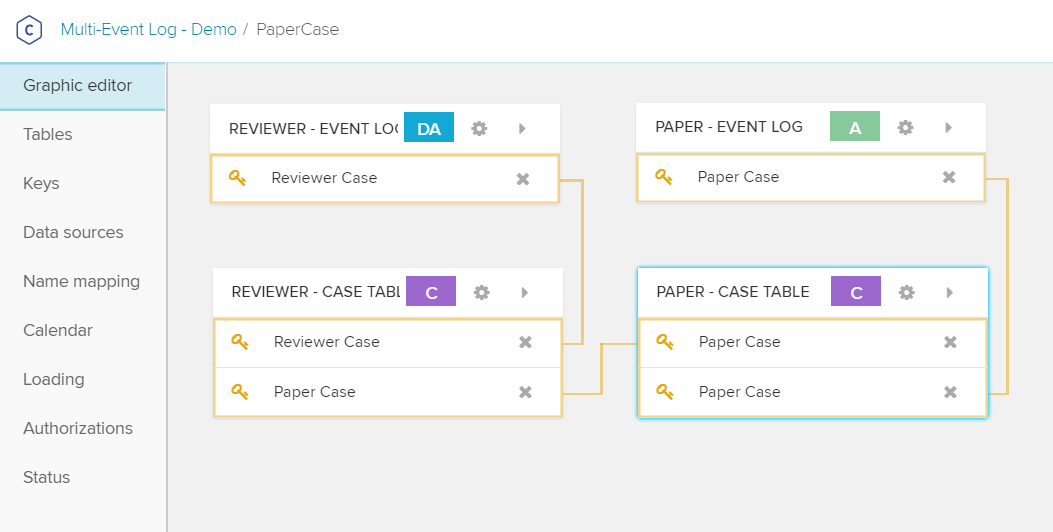 |
Connections to Amazon AWS Athena
With Celonis Process Mining 4.7, we added a Database Connection Template for Amazon AWS Athena.
Please find the full list of available database connections in database connection templates. More general information on how to import data into Celonis can be found in importing data.
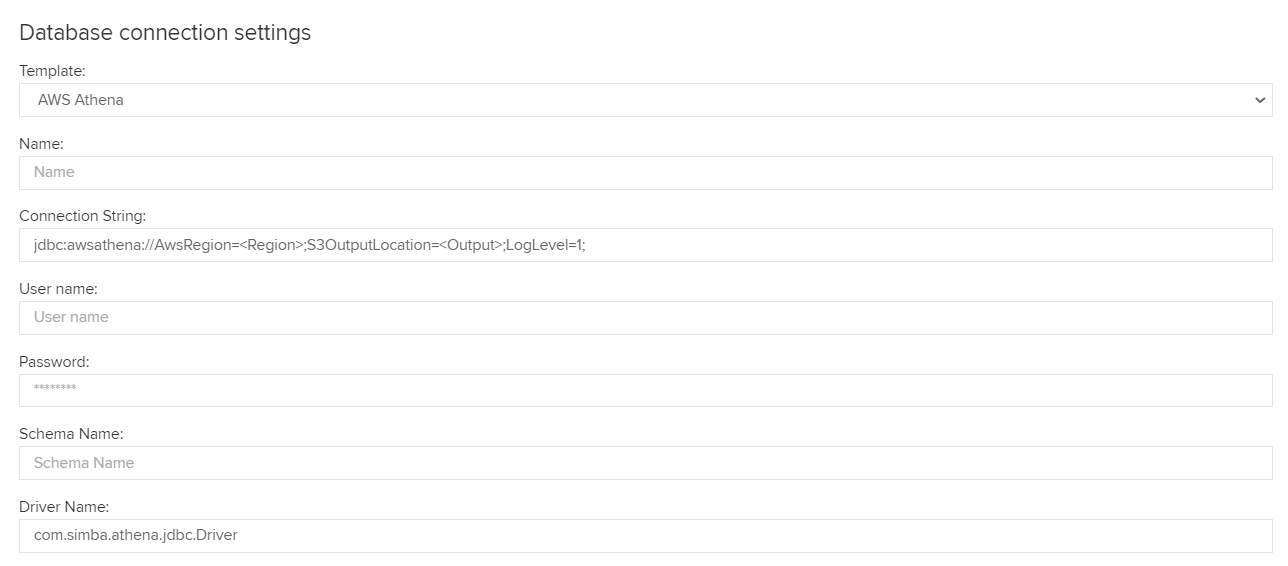 |
Compute Management UI
Previously, distributed Compute Nodes had to be managed from the config-custom.properties file. With the new release, we built a compute node management UI around the functionality to improve usability and to eliminate the necessity of restarting the application whenever the configuration changes.
Note
As the compute nodes are now managed in the frontend, the following properties within the config-custom.properties file will no longer affect the configuration:
compute.names
compute.urls
compute.sharedResources
compute.ssl.enabled
compute.ssl.trust-store
compute.ssl.trust-store-password
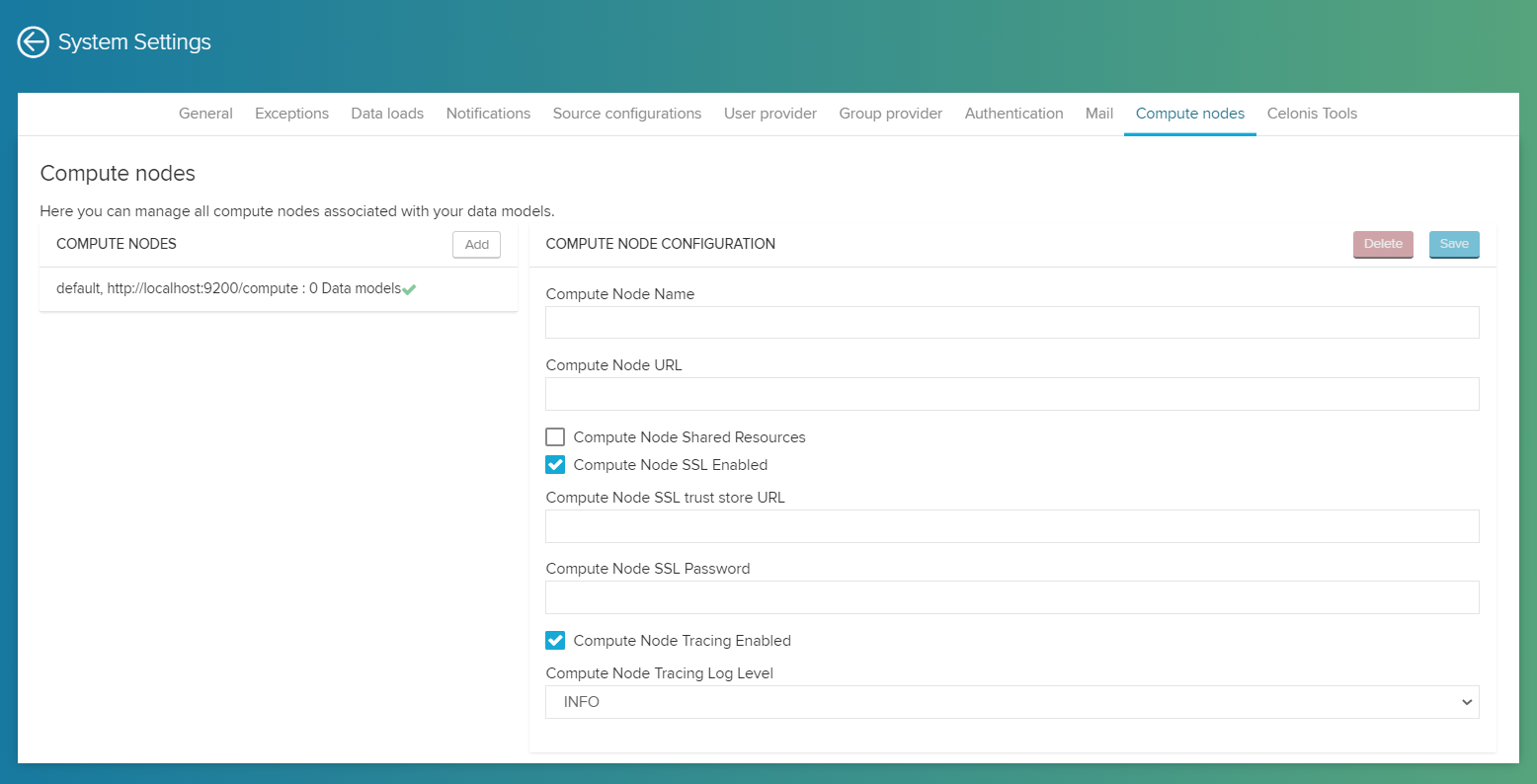 |
User/Group Provider scheduling with CRON string
The synchronization of the user provider and the group provider can now be scheduled with a CRON string. Previously it was only possible to configure a delay between synchronization attempts.
 |
Analysis - Constant Variables
A new concept of constant variables was introduced in the analysis. They are similar to regular variables but can not be defined by the user.
For the beginning the following two constants were introduced:
Constant | Result |
|---|---|
$CEL_USERNAME | The name of the user currently viewing/editing the Analysis. |
$CEL_ACTIVE_FILTERS | The filters/selections that are currently applied to the respective analysis. Returns the string representation of the filters, separated by ";". Note: Load scripts applied on any level (analysis, sheet, component) are not included. |
Constants can also be forwarded to External Links, by using the new action of the button component.
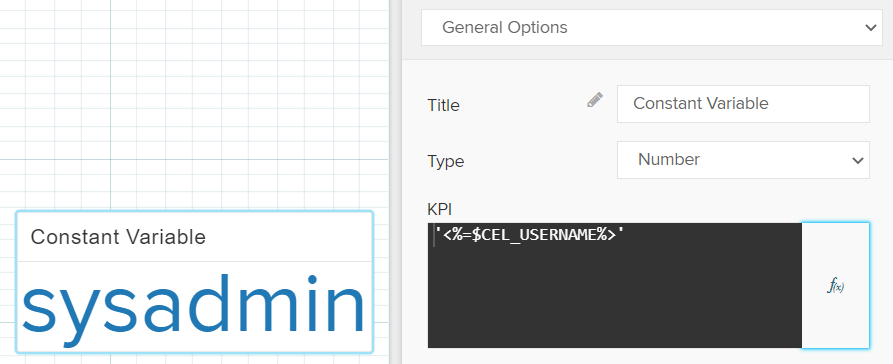 |
Analysis - Opening external links with the button component
We've also added a new action for the button component in the analysis: "Open External Link".
This action is used to open external links with the possibility to pass parameters with the variable notation. Supported parameters are variables and constant variables.
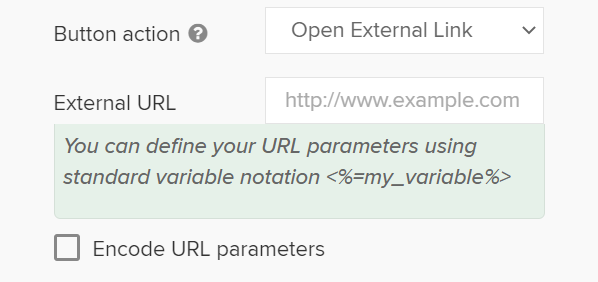 |
New PQL operators
We've added a variety of new PQL operators to give you even more flexibility when analyzing business data. Some examples to highlight:
Operator | Description |
|---|---|
Replaces substrings in a column and returns the column entries with respective replacements. | |
Clusters strings in a column based on their similarity. | |
Returns the row that follows/precedes the current row by offset number of rows. | |
Returns the concatenation of strings from the given parent column. | |
Creates values inside a range based on a given step size and appends them to a column. | |
Returns the sum of the previous rows. | |
Returns the greatest/least element that is not NULL from a set of values. | |
Computes transition edges between related cases from two different processes. | |
Index functions create integer indices based on a column. The following Process Index functions are available: |
Integrated PQL example and use case library
We've extended the PQL Function Library by adding more examples and use cases which show how you can combine various operators to answer complex process-related questions. The solutions are presented in interactive Analyses.
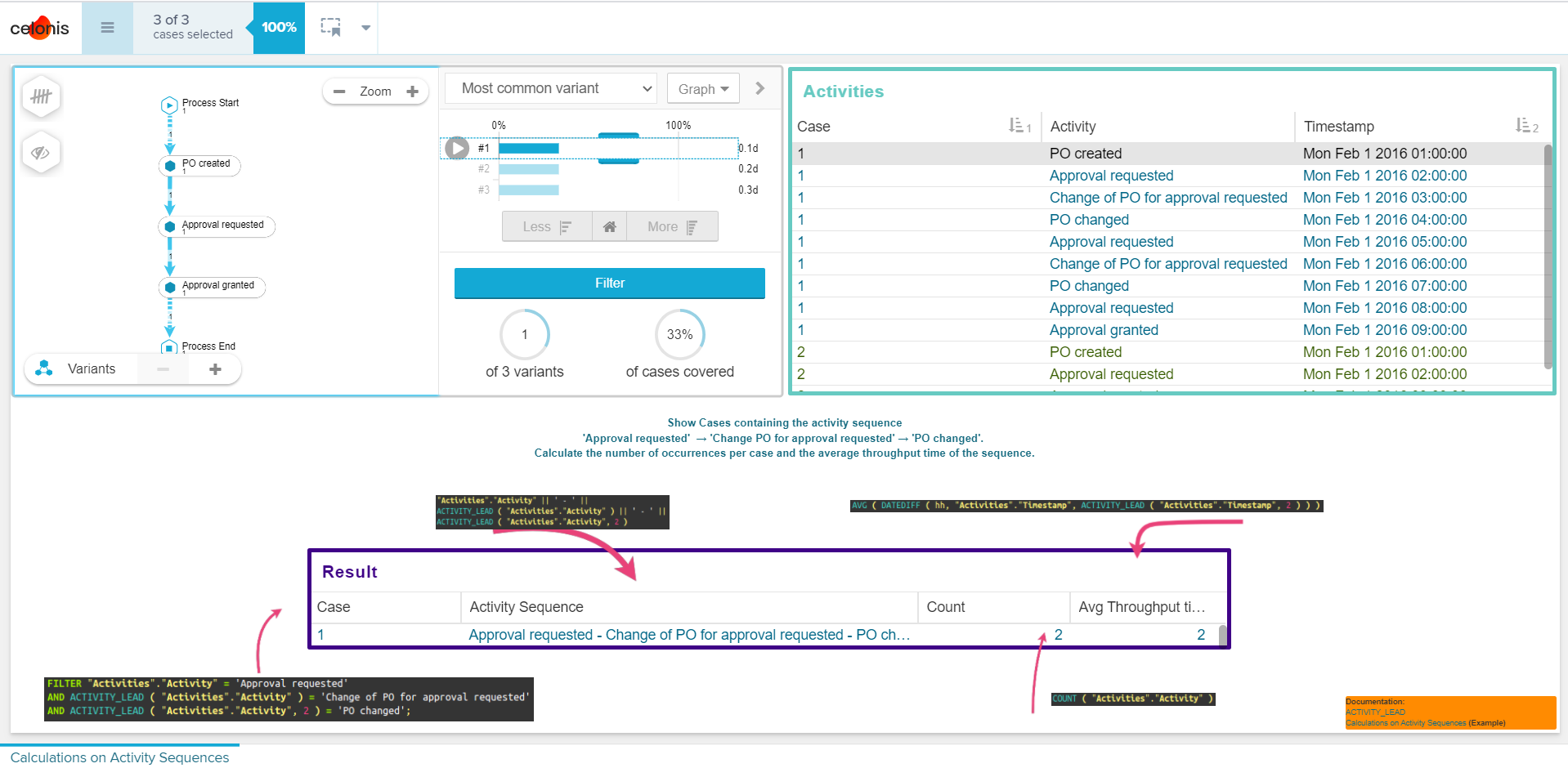 |
PQL - Calendar functions rework
The Day/Time based calendars were merged into one calendar implementation (called WEEKDAY_CALENDAR).
The new WEEKDAY_CALENDAR now supports shifts of true 24 hours (previously only 23h:59min).
The factory calendar expects that start date <= end date. Invalid intervals will be ignored in the calculations.
The new Workday Calendar (previously sometimes called SAP Factory Calendar) can handle gaps in the years of the TFACS configuration.
ADD_WORKDAYS using the workday calendars configured during data load is deprecated.
ADD_WORKDAYS (AW)/WORKDAYS_BETWEEN (WB) are given an additional (optional) argument to control the behavior.
In the reworked implementation for AW/WB, dates outside the TFACS configuration are mapped to null.
Performance was improved for all the calendar implementations.
Intersecting arbitrary calendars is now possible with the new INTERSECT function.
Other improvements
The timestamp of the last recorded login of a given user is now visible in the respective user profile.
Users can now be locked after a certain period of inactivity (configured in the "config-custom.properties" file via instance.usersLocker.expirationDays).
Locked users no longer count towards the license.
API Key Authentication can now be universally disabled (configured in the "config-custom.properties" file via apiKey.authentication.active).
Error handling was improved in several areas, e.g. PDF Export, Data Model load fails.
Improved performance of the Process Explorer in certain scenarios.
Deprecated features/operators
The R Server functions from previous versions are deprecated and no longer available.
Query pre-caching is deprecated and can no longer be configured. Query caching replaces the pre-caching functionality and is now enabled by default.